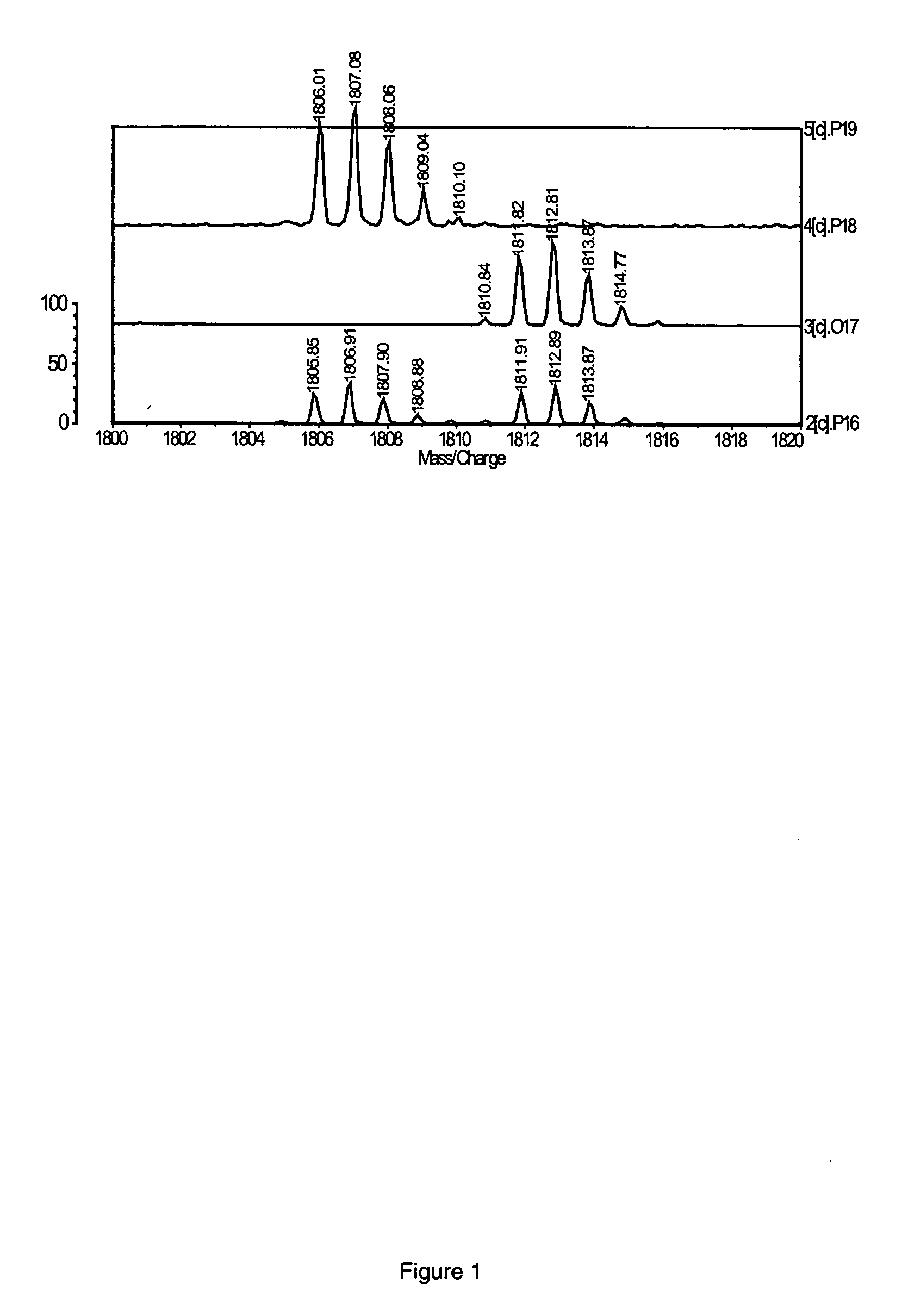Fluorescent isotope tags and their method of use
a fluorescence isotope and label technology, applied in the field of new products, can solve the problems of incomplete proteomic coverage, difficult quantitative quantitation of expression levels, time-consuming approach, etc., and achieve the effect of flexible multiplexing and increased sensitivity of differentially labeled proteins
- Summary
- Abstract
- Description
- Claims
- Application Information
AI Technical Summary
Benefits of technology
Problems solved by technology
Method used
Image
Examples
example 1
Synthesis of Compound 4
[0162] Benzoic-ring-13C6 acid (1) is nitrated by reaction with excess nitric acid. The carboxylic acid moiety directs nitration to the m-position to give arene 2 (13C carbon atoms are denoted by asterisks). The carboxylic acid in 2 is reduced to the alcohol with excess borane in hot THF, followed by oxidation to the aldehyde by reaction with excess pyridinium chlorochromate (PCC) in dichloromethane; reaction of the resulting aldehyde to the formate ester 3 is accomplished by reaction with excess 3-chloroperbenzoic acid (MCPBA) in dichloromethane. The nitro group in 3 is reduced to an amino group by catalytic hydrogenation, followed by bis-methylation with excess dimethylsulfate in DMF mediated by diisopropylethylamine (DIEA); the formate ester is cleaved with excess aqueous KOH in methanol to give ring-13C6-3-dimethylaminophenol (4).
example 2
Synthesis of Compound 7
[0163] A solution of two equivalents of 4 is condensed with trimellitic anhydride (5) in warm propionic acid with catalytic p-toluenesulfonic acid (TSA), followed by HPLC-based separation of regioisomers to give rhodamine 6 which contains twelve 13C atoms at the asterisk-indicated positions. Rhodamine 6 is converted into the amine reactive ester 7 by reaction with excess disuccinimidyl carbonate in the presence of catalytic 4-dimethylaminopyridine (DMAP).
example 3
Synthesis of Compound 10
[0164] A solution of two equivalents of 4 is condensed with 4-nitrophthalic anhydride (8) in warm sulfuric acid, followed by HPLC-based separation of regioisomers to give rhodamine 9 that contains twelve 13C atoms at the asterisk-indicated positions. The nitro group in 9 is reduced to an amino group with excess sodium sulfide ion methanol and water, and the amino group is converted into a thiol-reactive iodoacetamide moiety by reaction with two equivalents of iodoacetic anhydride in chloroform to give rhodamine 10.
PUM
 Login to View More
Login to View More Abstract
Description
Claims
Application Information
 Login to View More
Login to View More - R&D
- Intellectual Property
- Life Sciences
- Materials
- Tech Scout
- Unparalleled Data Quality
- Higher Quality Content
- 60% Fewer Hallucinations
Browse by: Latest US Patents, China's latest patents, Technical Efficacy Thesaurus, Application Domain, Technology Topic, Popular Technical Reports.
© 2025 PatSnap. All rights reserved.Legal|Privacy policy|Modern Slavery Act Transparency Statement|Sitemap|About US| Contact US: help@patsnap.com



